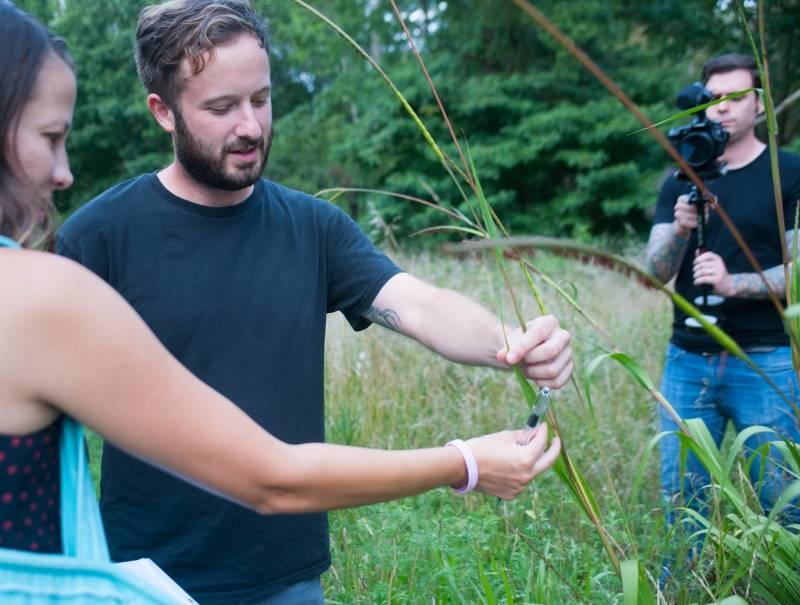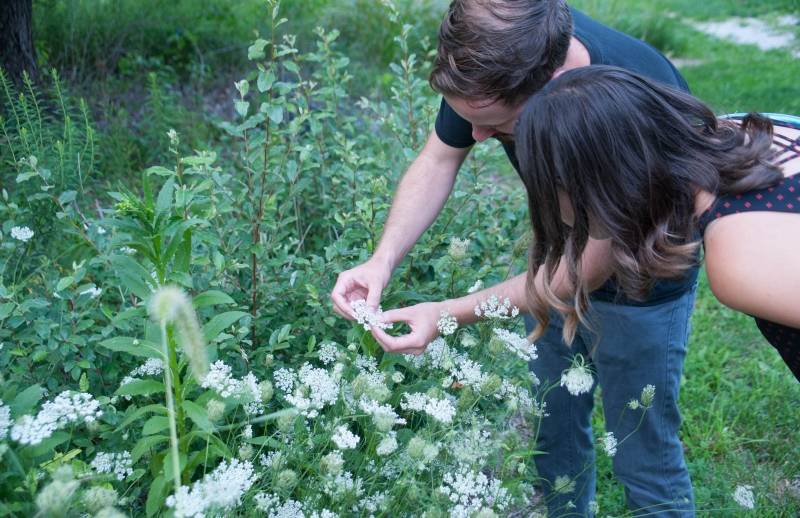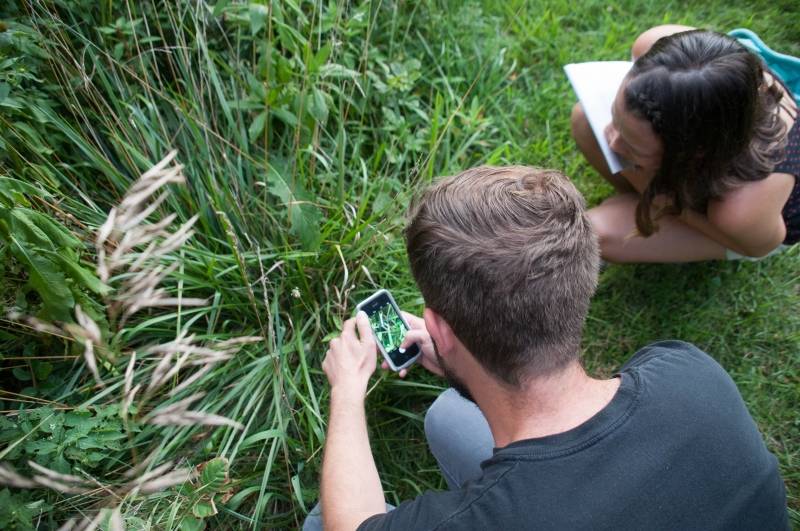It’s clear to see the love Matt Candeias has for plants and his appropriately named project, In Defense of Plants. It was while working at a job where he felt under-utilized and was simply classified as a “weird plant” guy that he realized that there aren’t articles about enjoying the plant for what it is and what it does. Most focus on folklore and medicinal purposes. So, like many entrepreneurs, he decided to fill that void.
He started off writing blogs, and then Matt began talking with more botanists and plant people, which turned into podcasts. When he came to the U of I he met Grant Czadzeck, the head of videography at the College of Business. Matt explained that it was during a mundane fishing trip that Grant expertly turned into a 5 minute dramatic film, that he realized he could turn his podcasts into films. According to Matt, “Plants are so visual, and videos are the perfect place to showcase that.” Grant went on to explain that there wasn’t a “defined plan on what they were going to do. The first videos and the videos now are starkly different.” It was after posting the videos on Reddit that they got responses from independent music artists saying “hey, we have music you could use.” And thus the progression began.
We ventured off the beaten, but mowed, path in Lake of the Woods. It’s more of Matt’s style to get in the bushes than to browse around the manicured sections of the prairieland. Grant has a fairly simple set up with his camera, which allows him to get right in the bushes with Matt. It was fun watching him smile and laugh when he found a plant that excited him. During our nature walk I learned the difference between the Ragweed and Golden Rod. Matt explained that since they bloom at the same time, many people blame their hay fever on the Golden Rod, but the pollen is sticky and so it doesn’t blow in the wind like the Ragweed pollen does. He kind of chuckled at the fact that Ragweed really “likes human disturbance”, so though most humans don’t like it, it’s here to stay because, well, they like when we disturb the ecosystem. In defense of Ragweed, which Matt blogged about last year, “Because it flowers so late into the season, Ragweed offers up a prodigious source of protein-rich pollen for bees gearing up for fall and winter” and “birds and small mammals readily consume ragweed seeds to help fatten up for the lean months to come.”

We continued along, zigzagging from one exciting plant to another. Matt pointed out a Black Walnut tree that poisons the ground around it to keep itself clear. “People get mad because things don’t grow under it, but it’s just doing what it needs to,” Matt explained. He pointed out some Sassafras that grows different shaped leaves. It’ll “deal with things in place, but it’s flexible in its abilities” Matt so eloquently stated. The first thing he made me touch was some Gamma Grass, because if you run your fingers down the leaf, it’s rough and if you look at it under a microscope it’ll look like sharks teeth. It’s a defense this grass has, so as to not be eaten by animals. He then took me to a Milkweed and as he broke open the leaf to expose a white substance, he explained that the milk in its leaves can slow your heart rate. Matt said that this is a great defense against birds for caterpillars, and it carries over once they’ve turned into butterflies.

We also found some Queen Anne’s Lace, named after Queen Anne of Britain, a very small patch of Purple Monkey Flower where I learned a little about parentage of plants, Evening Primrose which attracts the beautiful yellow and pink moth, and Bull Thistle, which is related to the artichoke, and originated from Europe. Matt explained how to spot whether it’s a native thistle or not; “native thistles are white and wholly under the leaf and the flowers are not as thorny.” We ended the walk with Nightshade, a relative to the tomato, I recognized the little yellow flowers similar to that of tomato plants, and Ironweed where I learned how to spot the difference between it and the Joe Pye Weed. “Ironweed’s leaves are offset,” Matt explained, whereas with other weeds “they may be right next to each other.”
Matt’s advice for learning about plants and trying to memorize them is to pick names that suit you, that are common. He goes on to explain that you should find what stands out to you and then you can pick characteristics, like the number of leaves, whether they are uncut, or lobbed leaves. He also encourages people to get a good field guide for not just Illinois, but for the Eastern side of the US. “Wherever you are, plants are growing, even in the urban landscapes of sidewalks,” Matt explains as he refers to the “green curtain” of “plant blindness” most people have. There’s an “oh look, it’s green” kind of white washing most anyone has while strolling about.

Toward the end of our adventure, Matt spotted a leafhopper. It took me a minute to realize he was referring to a tiny bug on a blade of grass that he was desperately trying to get his phone’s camera to focus on. “Just yesterday I said I was dying to see one!” Matt exclaimed. Now, I’m not a bug person, but I got down on my knees to get a closer look, and even our photographer got in there to try and get a pic. That’s what passion does to those around you. It’s encouraging, exciting and contagious. Once I got home I was eager to share with my husband what I had learned, and I’m excited to get back out there and show my kids some cool plants. “You don’t have to go about it the boring way, it’s not about flower parts, look it up know its name. You may not know what all the plants are but you know they are different. If we don’t take care of them, we stand to lose a lot. A little bit of knowledge goes a long way,” Matt encourages.
Check out his website complete with hundreds of blogs and podcasts where you can grow, or start, your love of plants. For quick access to their videos check out their YouTube channel. You can also find them on Facebook. When not busy with grad school and making videos, Matt is available for nature walk tours, and I highly recommend him. As he says, “I’m always up for a bit of botanizing.”
Photos by Megan Flowers.
*Edited to correct an error in a plant name.








